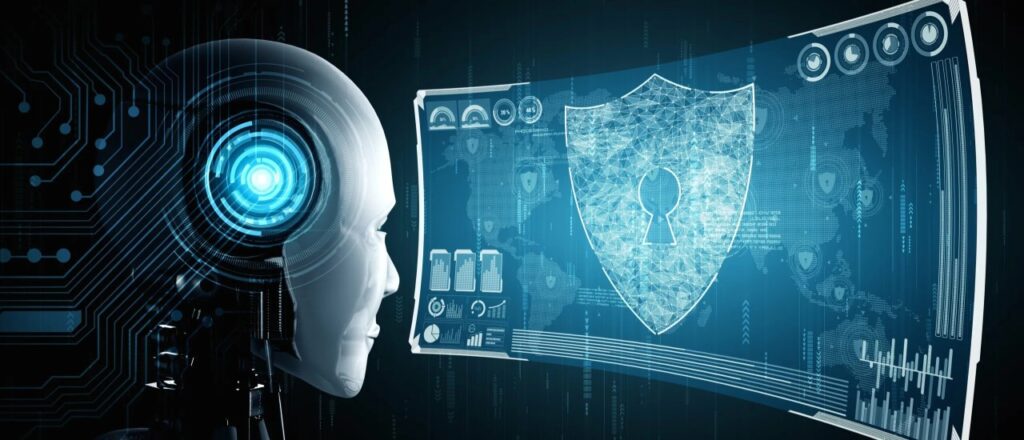Artificial intelligence (AI) is considered one of the most significant technological advancements of our time. While this technology has sparked revolutionary changes in many industries, it also plays a crucial role in cybersecurity. As cyber attackers employ advanced techniques to bypass defense systems, AI-based solutions hold the potential to provide more effective defense against these threats. Cybersecurity is a constantly evolving field, and traditional methods are no longer sufficient to combat increasingly sophisticated attacks. In this article, we will explore how AI is transforming cybersecurity and the ways it can be applied to enhance protection against cyber threats. For more detailed information, you can visit Artificial Intelligence and Cybersecurity.
Why Artificial Intelligence Matters in Cybersecurity
In the digital age, cyber threats are becoming more complex and harder to detect. Traditional cybersecurity measures, such as firewalls and antivirus software, often struggle to keep up with the rapid pace of cybercriminals’ evolving tactics. This is where AI steps in, offering a more dynamic and adaptive approach to security. AI’s ability to analyze vast amounts of data in real-time enables it to identify patterns and anomalies that might go unnoticed by human analysts. By leveraging AI, organizations can stay ahead of cybercriminals, identifying potential threats before they can cause significant damage.
Utilizing Artificial Intelligence in Cybersecurity
AI’s role in cybersecurity is multifaceted, with various applications designed to enhance detection, prevention, and response to cyber threats. Here are some key areas where AI is making a difference:
- Threat Detection and Prevention: AI can analyze large datasets to detect abnormal activities, enabling faster and more effective identification and prevention of attacks. Traditional methods often rely on pre-defined rules or signatures, which can be bypassed by more sophisticated attacks. AI, on the other hand, can learn and adapt, identifying new threats that do not fit traditional patterns. This proactive approach allows for the early detection of potential breaches, reducing the window of opportunity for attackers.
- Vulnerability Detection: AI can automatically scan systems to identify security vulnerabilities and provide recommendations to mitigate these risks. Vulnerability management is a critical aspect of cybersecurity, but the sheer number of potential vulnerabilities in a large organization can make it challenging to manage. AI can prioritize these vulnerabilities based on the potential impact and likelihood of exploitation, allowing security teams to focus their efforts where they are needed most.
- Phishing and Malware Detection: AI-based systems can detect phishing emails and malicious software, alerting users to potential threats. Phishing attacks are becoming increasingly sophisticated, often mimicking legitimate communications to trick users into revealing sensitive information. AI can analyze email content, sender behavior, and other factors to identify phishing attempts more accurately than traditional methods. Similarly, AI can detect malware by analyzing its behavior, even if it has not been previously identified.
- Automated Response and Intervention: AI can respond rapidly to cyberattacks and initiate automated interventions when necessary. In the event of an attack, time is of the essence. AI systems can automatically isolate affected systems, block malicious traffic, and initiate recovery processes, reducing the damage caused by an attack. This automated response capability is particularly valuable in large organizations, where manual intervention may not be fast enough to prevent widespread disruption.

Applications of AI in Cybersecurity
Beyond threat detection and prevention, AI has a wide range of applications in cybersecurity, each contributing to a more secure and resilient digital environment. Here are some additional ways AI is being applied in the field:
- Behavioral Analysis: AI systems learn users’ normal behavior patterns, enabling them to detect abnormal activities and identify potential threats. By monitoring user behavior over time, AI can establish a baseline of normal activity, making it easier to spot deviations that may indicate a security breach. This approach is particularly useful in detecting insider threats, where traditional security measures may fail to identify malicious activity by trusted employees.
- Machine Learning-Based Security Systems: Machine learning algorithms continuously update security systems by incorporating new data, making them more intelligent over time. As cyber threats evolve, machine learning models can adapt, learning from past incidents to improve their detection capabilities. This continuous learning process allows AI-based security systems to stay ahead of emerging threats, providing a more robust defense.
- AI-Enhanced Threat Intelligence: AI provides continuous updates on cyber threats, enhancing defense strategies. Threat intelligence involves gathering information about potential threats and vulnerabilities from various sources. AI can automate this process, analyzing vast amounts of data to identify new threats and provide actionable insights. By integrating AI-driven threat intelligence into their security operations, organizations can enhance their ability to respond to emerging threats in real-time.
- Automatic Vulnerability Analysis: AI identifies weak points in systems and provides recommendations to address security vulnerabilities. Traditional vulnerability assessments can be time-consuming and may miss critical issues. AI can automate this process, scanning systems for known vulnerabilities and identifying potential weak points that may be exploited by attackers. By providing detailed recommendations, AI helps security teams address vulnerabilities more effectively, reducing the risk of a successful attack.
- AI and Ethical Considerations in Cybersecurity: While AI offers significant benefits in cybersecurity, it also raises ethical and privacy concerns. The use of AI in monitoring and analyzing user behavior, for example, can raise questions about privacy and data protection. Additionally, there is the potential for AI systems to be exploited by malicious actors, either through the manipulation of machine learning models or the use of AI to create more sophisticated attacks. As AI becomes more integrated into cybersecurity, it is essential for organizations to consider these ethical issues and implement safeguards to ensure the responsible use of AI technology.
Conclusion
Artificial intelligence has become a significant weapon in cybersecurity. When applied correctly, AI-supported systems can offer more effective defense against cyberattacks and streamline the work of security professionals. However, it is essential to consider ethical and privacy concerns associated with the use of this technology. Therefore, professionals in the field of AI and cybersecurity must stay updated and use these technologies conscientiously. The future of cybersecurity lies in the integration of AI, and by leveraging its full potential, we can create a safer digital environment for all. For more in-depth insights, don’t forget to check out Artificial Intelligence and Cybersecurity.




